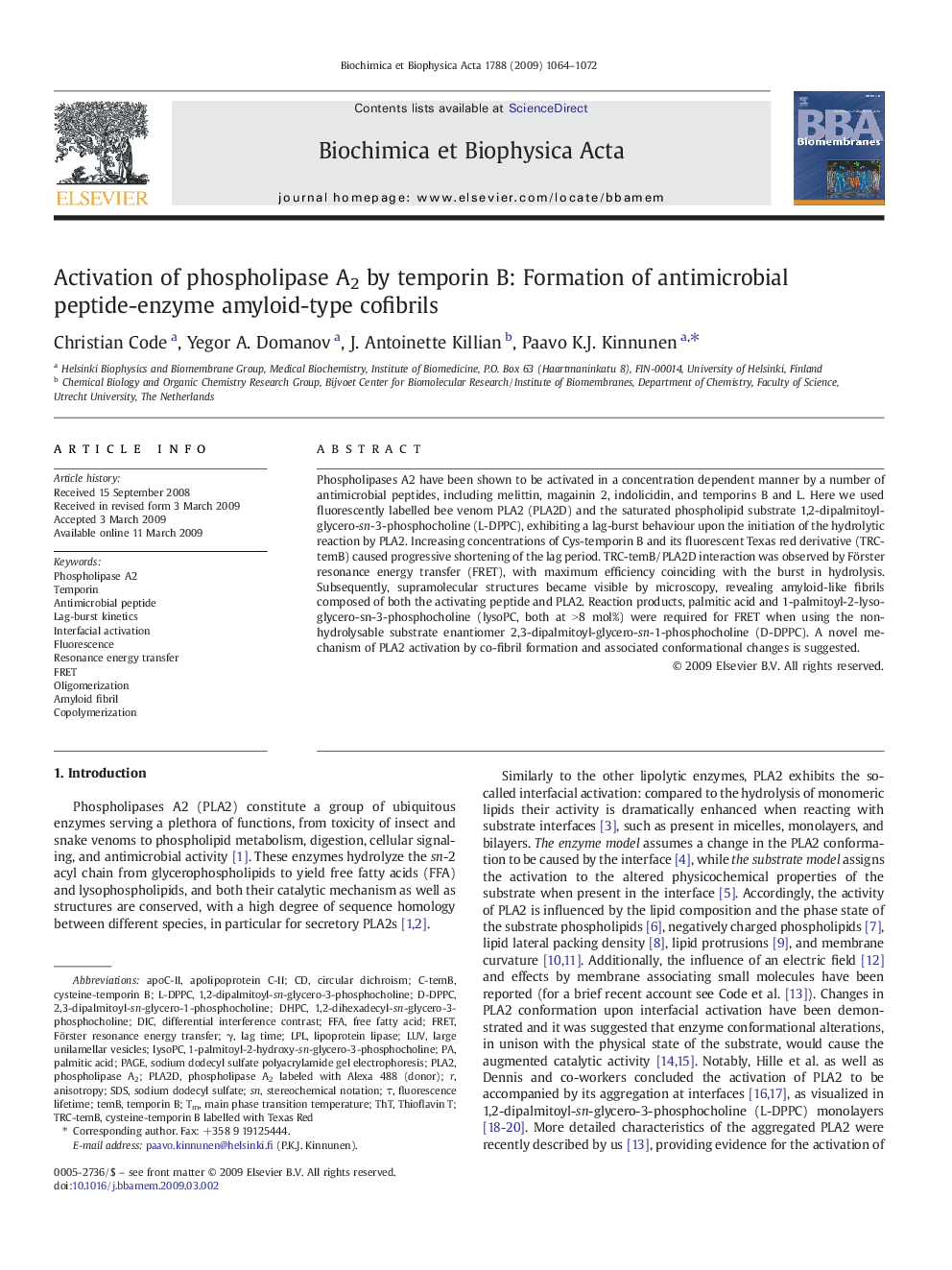| Article ID | Journal | Published Year | Pages | File Type |
|---|---|---|---|---|
| 1945183 | Biochimica et Biophysica Acta (BBA) - Biomembranes | 2009 | 9 Pages |
Abstract
Phospholipases A2 have been shown to be activated in a concentration dependent manner by a number of antimicrobial peptides, including melittin, magainin 2, indolicidin, and temporins B and L. Here we used fluorescently labelled bee venom PLA2 (PLA2D) and the saturated phospholipid substrate 1,2-dipalmitoyl-glycero-sn-3-phosphocholine (L-DPPC), exhibiting a lag-burst behaviour upon the initiation of the hydrolytic reaction by PLA2. Increasing concentrations of Cys-temporin B and its fluorescent Texas red derivative (TRC-temB) caused progressive shortening of the lag period. TRC-temB/PLA2D interaction was observed by Förster resonance energy transfer (FRET), with maximum efficiency coinciding with the burst in hydrolysis. Subsequently, supramolecular structures became visible by microscopy, revealing amyloid-like fibrils composed of both the activating peptide and PLA2. Reaction products, palmitic acid and 1-palmitoyl-2-lyso-glycero-sn-3-phosphocholine (lysoPC, both at >Â 8Â mol%) were required for FRET when using the non-hydrolysable substrate enantiomer 2,3-dipalmitoyl-glycero-sn-1-phosphocholine (D-DPPC). A novel mechanism of PLA2 activation by co-fibril formation and associated conformational changes is suggested.
Keywords
SDSPLA2dHPCLysoPCPAGEApoC-IILPLCopolymerizationFFADIC1,2-dihexadecyl-sn-glycero-3-phosphocholineOligomerization1-palmitoyl-2-hydroxy-sn-glycero-3-phosphocholine1,2-dipalmitoyl-sn-glycero-3-phosphocholinephospholipase A2apolipoprotein C-IIFree fatty acidSodium dodecyl sulfate polyacrylamide gel electrophoresisFörster resonance energy transferresonance energy transferFRETlarge unilamellar vesiclesThTThioflavin Tmain phase transition temperaturecircular dichroismLag timesodium dodecyl sulfateFluorescence lifetimeInterfacial activationFluorescenceAmyloid fibrilLUVLipoprotein lipaseTemporinAnisotropyPalmitic acidAntimicrobial peptidedifferential interference contrast
Related Topics
Life Sciences
Biochemistry, Genetics and Molecular Biology
Biochemistry
Authors
Christian Code, Yegor A. Domanov, J. Antoinette Killian, Paavo K.J. Kinnunen,
